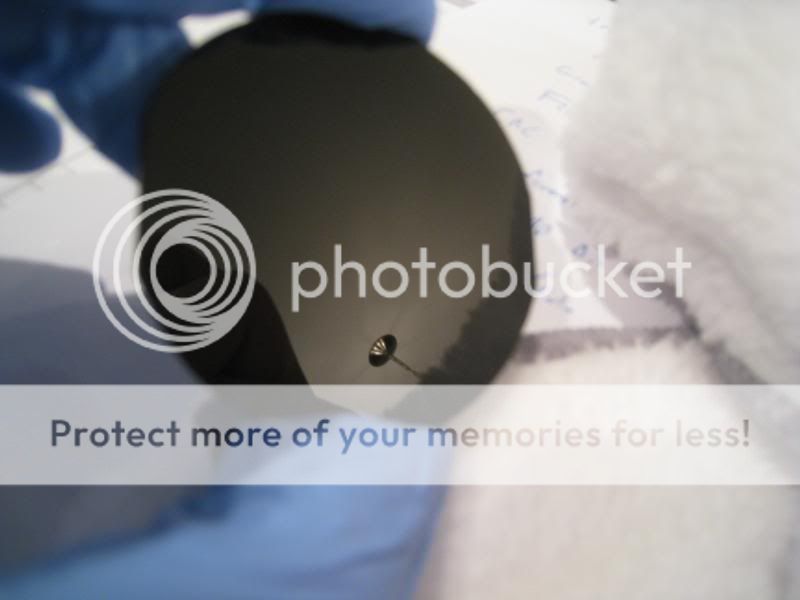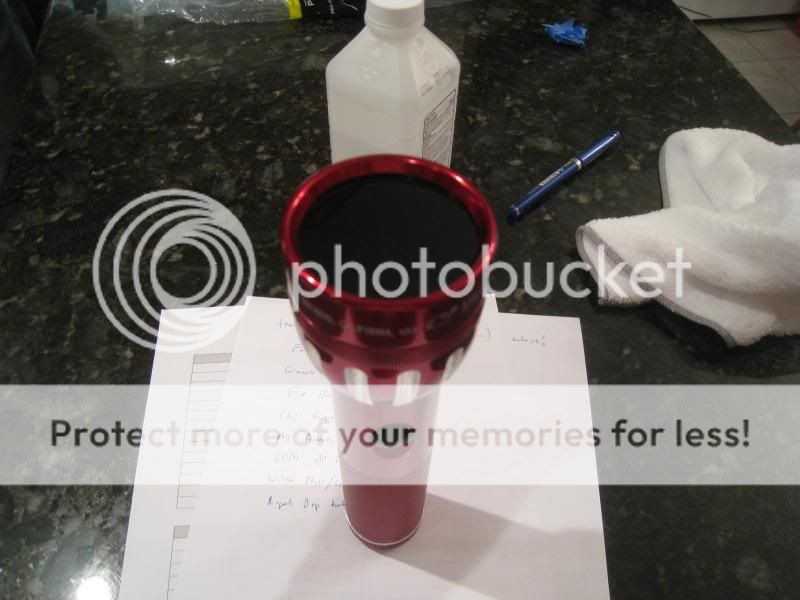Inspired by CPFers xpitxbullx and Burnt Retinas, I tried my hand at a UV version of the a 14W Mag HID (build by Mac). Obtained a 2" x 2" piece of Hoya U340 (not cheap stuff), and carefully and painstakingly ground it down to the size of the mag window. I fit it into the bezel, and it looked perfect.


Fired it up, and it was amazing. UV was clearly fluorescing objects more than 40 feet away with negligible visible light output. I left it on for approximately 2 minutes, and then shut the light down. About 30 seconds after the light was turned off, I heard a pop and noticed a hairline crack across the window. After determining that there was nothing much to be done, I fired it up again for another 30 seconds. Initially, the output looked perfect. But as it ran (presumably, as the window heated up and expanded), the visible light began pouring it.
I'm not sure what went wrong. The threads by the CPFers listed above said that it worked just fine for extended runtimes. Initially after the crack, the window didn't feel all that hot. However, after another minute or so, the surface was fairly hot (could it really take this long for transfer by conduction to the surface of the window?). Now I'm trying to figure out what the problem was -- perhaps it was the sheer amount of heat produced by the blocked IR? Or perhaps the tolerances were too tight, and thermal expansion of the glass pushed it up against the bezel walls enough to crack it.
I'm not sure, but I don't think I can afford to experiment with it again


Fired it up, and it was amazing. UV was clearly fluorescing objects more than 40 feet away with negligible visible light output. I left it on for approximately 2 minutes, and then shut the light down. About 30 seconds after the light was turned off, I heard a pop and noticed a hairline crack across the window. After determining that there was nothing much to be done, I fired it up again for another 30 seconds. Initially, the output looked perfect. But as it ran (presumably, as the window heated up and expanded), the visible light began pouring it.
I'm not sure what went wrong. The threads by the CPFers listed above said that it worked just fine for extended runtimes. Initially after the crack, the window didn't feel all that hot. However, after another minute or so, the surface was fairly hot (could it really take this long for transfer by conduction to the surface of the window?). Now I'm trying to figure out what the problem was -- perhaps it was the sheer amount of heat produced by the blocked IR? Or perhaps the tolerances were too tight, and thermal expansion of the glass pushed it up against the bezel walls enough to crack it.
I'm not sure, but I don't think I can afford to experiment with it again

